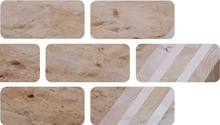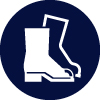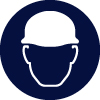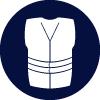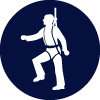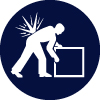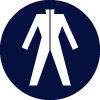
Cross Laminated Timber Wood 17 02 01
Cross Laminated Timber (CLT) is an engineered laminated product using multiple layers (3-7) of dimensional timbers from second- and third-growth softwood species (e.g. spruce, larch, fir or pine) that are laid perpendicular to adjacent layers using durable and moisture-resistant structural adhesives. CLT is different to glulam beams, as it is only made in factory-manufactured panels of various sizes, thicknesses, quality and finish depending on the architectural design and structural specification. The manufacturing process allows small lengths of timber off-cuts to be used in pre-fabrication and off-site construction markets. Buildings constructed of CLT wall and floor panels are currently as high as eight storeys in UK, requiring specialist deconstruction techniques at their end of life. CLT is commonly marketed as a sustainable and renewable product that has a low carbon impact, with versatility and speed of construction to compete with traditional masonry, steel or concrete frame construction. Their external surfaces will often include a protective cladding of insulated panels, insulation, masonry or a rainscreen tile system.
Usage & Probable Locations
CLT has particular uses in pre-fabricated panels that are increasingly being used for simple and quick on-site building systems, consisting of integrated wall, floor and roof panels. It has special qualities in strength, beauty and resistance to fungal or pest attack, where the perpendicular laminating process can create strong, flexible and air tight buildings quickly. CLT panels will transfer structural load throughout the building depending on the structural and architectural designs, requiring deconstruction processes if the panels are to be reused. CLT is increasingly found in modern buildings designed for their low carbon impact and benefitting from the speed of construction. They are used for schools, hospitals, offices, houses, apartments and buildings in remote locations.
Personal Protective Equipment
PPE requirements indicated are for guidance purposes only. DRIDS has identified the PPE that is mandatory on all demolition projects and ones that may be required subject to site specific Risk Assessment & Method Statement (RAMS). Hover over the icon to determine the types of PPE required for the removal of this material.
Removal, Segregation & Storage
CLT panels that are in good condition and of similar size panels will have a reclamation and reuse value. They should be deconstructed, segregated and stored flat on a suitably sized pallet or on timber skids, preferably inside a building or covered with plastic or tarpaulin sheets to keep them dry. They should also be stored away from plant movements to prevent splash damage or breakage. CLT panels will often include pre-installed lifting strops tucked inside anchor holes that were rolled up and taped over during construction. These can be used to deconstruct the panels using an approved removal schedule, possibly benefitting from the original construction stage plan if available. CLT panels not destined for reuse should be stored and transported on a flat-back truck or inside a large timber only skip for subsequent recycling or recovery.
Tools
Fixtures, Fittings & Connections
Health & Safety
Subject to task-specific Risk Assessment & Method Statement (RAMS). Use correct protective equipment for removing fixings, especially bolts, pins, plates, hangers and screws. Be aware that CLT panels can exert very large loads that should be fully understood before deconstruction or disassembly. Wear gloves when handling timbers with damaged edges, coated in paints or adhesives to prevent irritation, cuts and splinters. Wear eye protection when removing nails and screws with a crowbar, hammer or nailbar. Only competent people to use elevated platforms, 360 machines and attachments or flat-back trucks, all subject to RAMS.

